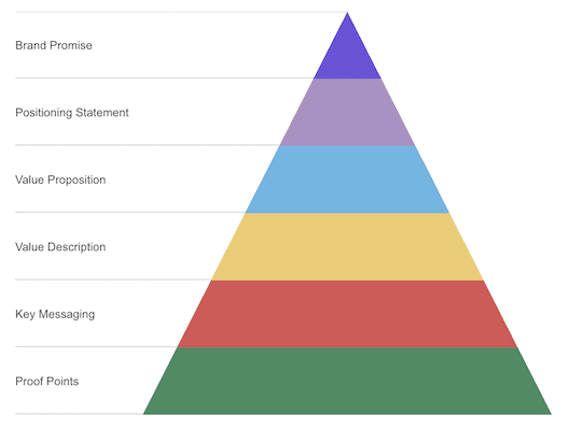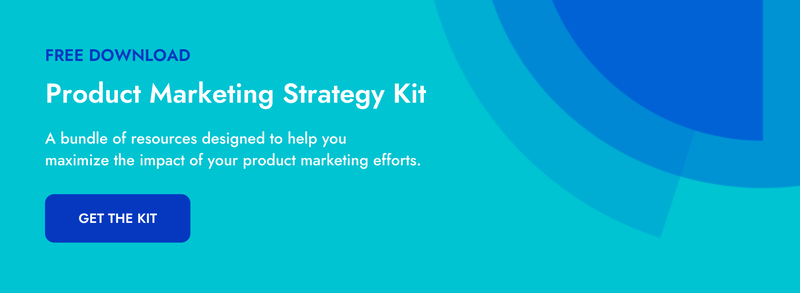Did you check out our post on messaging hierarchies? If so, you know a little bit about brand promises. On the matrix of vital messaging for brands trying to convey their unique value proposition, the brand promise exists at the matrix’s most refined stage.
A brand promise is the distillation of your company’s unique features, benefits, strengths, and characteristics. It’s the most concise layer of messaging your company has in its arsenal.
As such, it can also be one of the most difficult to craft. But tight parameters can offer the best opportunities for creativity. And creativity is key when you’re trying to differentiate your brand from the competition. Here at Crayon, we know a thing or two about differentiation, because we help our clients leverage competitive intelligence to say something unique every single day.
In this post, we’re going to teach you how to do more with less; how to use the most refined stage of your brand’s messaging hierarchy to say something bold, expansive, and unique. Something that leaves a lasting impression on any prospect who sees or hears it.
Here are three keys to crafting an excellent brand promise.
What is a brand promise?
First, let’s flesh out this concept of a brand promise. What is it?
Your company’s brand promise is a concise statement that conveys its core, foundational value to the consumer or buyer. Further, this is value that a prospect, customer, or peer experiences every time they interact with your brand.
Your company’s brand promise weeds out all the B.S. All the brainstorms geared toward unlocking compelling ad and web copy, PR messaging, product positioning—none of that should appear overtly in a brand promise. At the same time, all of it should be present beneath the surface.

Via The Forum.
We first laid out the above chart in our post on messaging hierarchies. You can see that brand promise exists at the pinnacle of the model. That doesn’t mean it’s the most important (although in some situations it certainly can be). It simply means that it’s the most refined.
A brand’s proof points, key messaging, value props—all the messaging examined and crafted at prior stages—needs to be considered when crafting a brand promise. The question, above all, that each brand is tasked with answering, is this:
What’s the one common benefit or characteristic of the brand that all our customers experience?
The answer to this question lies beyond any “fluff” leveraged in the creation of proof points, key messaging, and value props. A brand promise is undeniable, because no person who interacts with that brand can say they haven’t kept it. The breaking of that promise, via any experience with their personnel, products, or services, is a crack in the foundation upon which said brand is meant to grow.
Can a company have more than one brand promise?
Fundamentally, a brand promise should strive to exist on its own. That said, like the messaging hierarchy itself, companies can choose to craft multiple brand promises for different segments, products, or services within their business.
For instance, let’s say you’re a brand manager at a medical device company. You’re trying to create messaging around a new product that’s distinct from the flagship product upon which the business was built. You can absolutely create a brand promise for that product—an endeavor that would change the question you need to answer ever so slightly:
What’s the one common benefit or characteristic of the product that all our customers experience?
You might say this is more of a “product promise” than a brand promise, but for the purpose of the exercise, it can be really useful to have siloed messaging that’s personalized to different segments of the customer base. Here are just a few of the advantages to such an approach:
- The ability to arm a sales team with better scripts and talking points to address distinct sets of pain points.
- The ability to bring new products to market with more efficacy and better positioning.
- The ability to scale individual business units beneath a greater brand umbrella.
Again, the goal of a brand promise should be to eliminate the fluff and unearth the foundational value of the business. But if you work within a larger brand with multiple product or business units, there’s no need to limit yourself to a single brand promise.
3 keys to crafting an excellent brand promise
Now that we’ve fleshed out the idea of a brand promise and talked through a few use cases, let’s dive into our three keys to creating one that leaves a truly lasting impression on everyone who interacts with your brand.
Key #1: Keep it formulaic, but not predictable
Let’s look at five brand promise examples from prominent companies. What do they have in common?
- Coca-Cola: To inspire moments of optimism and uplift.
- Nike: To bring inspiration and innovation to every athlete in the world.
- H&M: More fashion choices that are good for people, the planet, and your wallet.
- Starbucks: To inspire and nurture the human spirit—one person, one cup, and one neighborhood at a time.
- Marriott: Quiet luxury. Crafted experiences. Intuitive service.
You’ll notice that the brand promises of Coca-Cola, Nike, and Starbucks all take on a mission statement-like quality. They use “to” language to convey the promise they aspire to keep with every brand interaction.
You’ll also notice that all of these brand promises are concise. You see no mention in Coca-Cola about their variety of flavors. Marriott doesn’t talk about their abundance of locations. Each brand has narrowed its brand promise to just a few qualities that represent their most important differentiators.
Finally, you’ll notice that many of these brands aspire to value that exceeds the benefits of their products. Starbucks wants to inspire and nurture the human spirit. Coca-cola wants to uplift—not just provide a tasty beverage.
Key #2: Know your brand (and don’t kid yourself)
Now, that’s not to say you need to think outside the scope of your company’s traditional mission. Not every brand has the means to make the world a better place—nor should every brand strive to. If you really know your brand and where your company excels, you may take more of a Wegman’s-esque approach: Consistent low prices.
Above all, each prospective element of a brand promise should meet the following criteria:
- It’s something you know your company does better than anyone else.
- It’s something customers and prospects know you for.
- You feel strongly you can deliver it time and time again.
If, like Wegman’s, low prices are the most definitive reason customers buy from your brand, you need not make any claims to quality. Know your brand (and don’t kid yourself), and the resulting brand promise will be a statement upon which your company can thrive.
Key #3: Make a promise your company can keep
We mentioned earlier that “breaking” a brand promise can be damaging. While it’s true that not every customer will have the interaction with your brand that you want, you and your colleagues should make every effort to ensure that they do. That means crafting a brand promise that isn’t solely used for marketing and sales; it’s something that is well within your company’s means.
A brand promise can and should be aspirational—and your company should use it as a driving force for growth. But it’s going to be impossible to do so if you’re unable to meet that promise with a meaningful segment of your audience.
Don’t, for instance, tout your customer service if your company lacks the infrastructure to ensure that everyone actually gets great customer service. Don’t tout ease-of-use if you know there are issues with your product that your colleagues are working to solve. These are seemingly obvious examples, but the sentiment is really important. A brand promise should act as a goal around which your company can grow and improve. But it needs to be an attainable goal.
Avoid overpromising to customers, and you’ll put your team and the teams around you in a position where they can consistently overdeliver.
Can a company’s brand promise change over time?
In some situations, it’s OK for your company’s brand promise to change over time. Brands grow and change as they scale; sometimes, situations arise that call for a change in messaging. In these situations, brand promises need not be a one shot deal.
Consider the enterprise business, though. If you’re an employee at a highly visible company, and customers expect to have an experience with that company that’s been cultivated over many years, suddenly changing that experience can be unnerving. Be aware: If you move the goalposts too many times, you risk watering down your brand’s value.
Above all, your goal should be to preserve and build upon the brand equity that you build with your customers. The best way to do that is to craft a core value proposition that you know will drive the business even as it changes, and even as the demands of the consumer change.
Promise excellence every time with competitive intelligence
At Crayon, we know how difficult it is to craft a brand promise that truly sets your organization apart. We work with brands every day that are striving to position themselves and their products as leaders in the clubhouse.
We believe competitive intelligence is vital to that process. Our goal is to give brands the tools they need to understand how their competitors convey their unique selling propositions. Armed with that understanding, our clients have a competitive template with which they can undertake the challenge of crafting excellent brand promises.
Want to get started? Try our free competitive landscape report, or check out one of our case studies to see how Crayon helps brands craft truly unique competitive messaging.

Related Blog Posts
Popular Posts
-
 The 8 Free Market Research Tools and Resources You Need to Know
The 8 Free Market Research Tools and Resources You Need to Know
-
 How to Measure Product Launch Success: 12 KPIs You Should Be Tracking
How to Measure Product Launch Success: 12 KPIs You Should Be Tracking
-
 24 Questions to Consider for Your Next SWOT Analysis
24 Questions to Consider for Your Next SWOT Analysis
-
 How to Create a Competitive Matrix (Step-by-Step Guide With Examples + Free Templates)
How to Create a Competitive Matrix (Step-by-Step Guide With Examples + Free Templates)
-
 6 Competitive Advantage Examples From the Real World
6 Competitive Advantage Examples From the Real World





